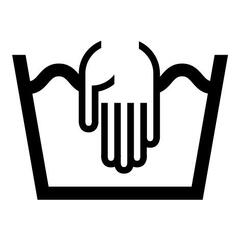Technical sole
Sole design that has been the subject of extensive research in our laboratories, combined with a specific rubber formulation to offer a better compromise in terms of grip and traction. The sole design of the FH 500 provides more grip and traction. Definition > Traction: not slipping on loose ground (loamy or dry).
Grip: not slipping on hard ground (wet or dry).
EVOFIT concept
the inner foam, stretch mesh and exterior design are tailored to perfectly conform to the shape of your foot. This is combined with a welded film to provide good support and maximum comfort.
What size should I choose?
For hiking, do not hesitate to buy one size larger than the usual size to guarantee excellent comfort on the descent and to avoid toes rubbing at the tip of the shoe. Tip: keep your toenails short, and before going downhill at any time, check that your laces are tight enough to stop your feet slipping down towards the front of the shoes.
Sizes
In addition, we would like to point out that since these shoes are designed for Fast Hiking, the design team has chosen to focus mostly on foot hold and comfort. This is why at first hikers with a wide foot may find them difficult to put on.
Buying and fitting advice?
Try on both boots, standing up, with the socks worn for hiking.
Try several models and various sizes if necessary.
Check two comfort points: the base of the heel and the front part of the foot going down. Avoid all pressure points when trying shoes on.
Don't hesitate to walk around the store. Gradually start using you shoes during your first few hiking trips to break them in.
OUR APPROACH
Because we are aware that we must act to preserve our playground, Quechua is committed to limiting products.Repairability is the heart of our developments.
Product design: our expertise
Our Quechua global design centre is based in Passy, at the foot of Mont-Blanc in Haute Savoie. This location makes it a real meeting place for our teams (designers, product managers, engineers, etc) and outdoor sports enthusiasts. A great asset for designing your mountain walking products and providing you with all our expertise.
How to prevent blisters
Blisters generally develop when the skin is weakened by friction. In order to prevent them from occurring, we recommend the following:
- Choose a boot in your size (consult the size guide)
- Wear the right type of socks
- Lace up and tighten your boots properly
- When you wear your boots for the first time, keep the outing short
How should you look after your boots?
- Leave to air dry.
- Remove dry mud with a stiff brush.
- Clean marks using a brush and some warm water
- Leave to dry
- Spray with a re-waterproofing product to restore the water-resistance to the upper.
